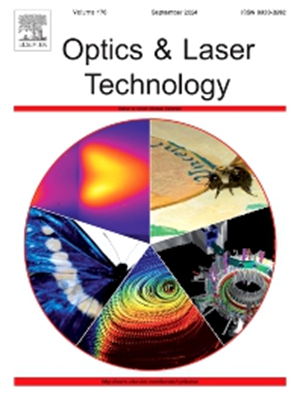An alternative AI-based inverse design paradigm for photonic devices
IF 4.6
2区 物理与天体物理
Q1 OPTICS
引用次数: 0
Abstract
This paper introduces a pioneering inverse design paradigm for the refinement and enhancement of photonic devices utilizing an AI-based algorithm known as reinforcement learning (RL). The efficacy of this novel model is examined through calibrating a selected photonic device geometry to achieve the desired device response. A comparative analysis reveals the remarkable potency of the RL framework as it outperformed conventional optimizers, such as particle swarm optimization (PSO) and a modified version of the trust region algorithm (MTR). The RL framework yielded substantial enhancement in the device performance by 41.8% for the PSO design and 71.9% for the MTR design. Additionally, the RL framework demonstrated fast convergence toward the most optimal design in only 55 iterations, which is a stark departure from the 1000 iterations required by the PSO algorithm, and the 1700 iterations required by the MTR algorithm. Furthermore, the A2C-RL model was extended to enhance the geometry of a different PCF, while simultaneously incorporating liquid crystal infiltration into selected air holes in the PCF to produce wide-band ultra-flattened dispersion compensators, showcasing the versatility and effectiveness of A2C-RL in generating unconventional design choices, while reaching the best possible design. Furthermore, the generalizability of the proposed model is rigorously illustrated by achieving a 15% enhancement in the bandwidth of a Ku-band broadband metamaterial absorber within merely seven iterations. This result underscores the efficacy and adaptability of the A2C-RL model, affirming its potential for broader application across a wide range of photonic devices.
另一种基于人工智能的光子器件逆向设计范式
本文介绍了一种开创性的反向设计范例,用于利用基于人工智能的算法(称为强化学习(RL))来改进和增强光子器件。通过校准选定的光子器件几何形状来检验这种新模型的有效性,以实现所需的器件响应。对比分析揭示了RL框架的显著效力,因为它优于传统的优化器,如粒子群优化(PSO)和改进版本的信任域算法(MTR)。RL框架使器件性能在PSO设计和MTR设计中分别提高了41.8%和71.9%。此外,RL框架仅在55次迭代中就证明了向最优设计的快速收敛,这与PSO算法所需的1000次迭代和MTR算法所需的1700次迭代截然不同。此外,对A2C-RL模型进行了扩展,以增强不同PCF的几何形状,同时将液晶渗透到PCF的选定空气孔中以产生宽带超平坦色散补偿器,展示了A2C-RL在产生非常规设计选择方面的多功能性和有效性,同时达到了最佳设计。此外,通过在仅仅七次迭代中实现ku波段宽带超材料吸收体带宽的15%增强,严格说明了所提出模型的普遍性。这一结果强调了A2C-RL模型的有效性和适应性,肯定了其在各种光子器件中的广泛应用潜力。
本文章由计算机程序翻译,如有差异,请以英文原文为准。
求助全文
约1分钟内获得全文
求助全文
来源期刊
CiteScore
8.50
自引率
10.00%
发文量
1060
审稿时长
3.4 months
期刊介绍:
Optics & Laser Technology aims to provide a vehicle for the publication of a broad range of high quality research and review papers in those fields of scientific and engineering research appertaining to the development and application of the technology of optics and lasers. Papers describing original work in these areas are submitted to rigorous refereeing prior to acceptance for publication.
The scope of Optics & Laser Technology encompasses, but is not restricted to, the following areas:
•development in all types of lasers
•developments in optoelectronic devices and photonics
•developments in new photonics and optical concepts
•developments in conventional optics, optical instruments and components
•techniques of optical metrology, including interferometry and optical fibre sensors
•LIDAR and other non-contact optical measurement techniques, including optical methods in heat and fluid flow
•applications of lasers to materials processing, optical NDT display (including holography) and optical communication
•research and development in the field of laser safety including studies of hazards resulting from the applications of lasers (laser safety, hazards of laser fume)
•developments in optical computing and optical information processing
•developments in new optical materials
•developments in new optical characterization methods and techniques
•developments in quantum optics
•developments in light assisted micro and nanofabrication methods and techniques
•developments in nanophotonics and biophotonics
•developments in imaging processing and systems

 求助内容:
求助内容: 应助结果提醒方式:
应助结果提醒方式:


